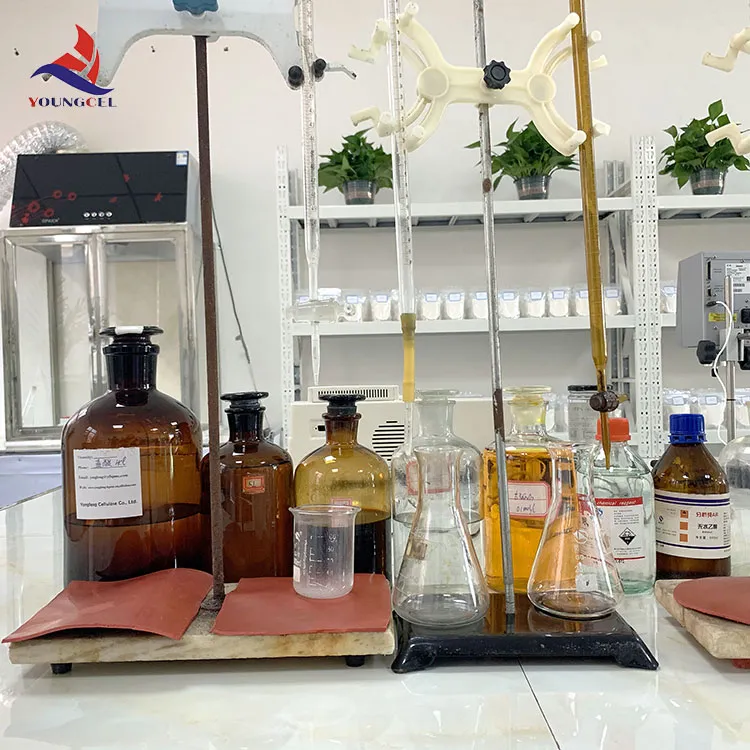The Market Dynamics of Cellulose Ether Prices
Cellulose ethers are a class of compounds derived from cellulose, a natural polymer found in the cell walls of plants. They are widely used in various industries, including pharmaceuticals, food, construction, and personal care, due to their unique properties such as viscosity, emulsification, gel formation, and binding capabilities. As demand for cellulose ethers continues to grow, understanding the factors influencing their prices becomes paramount for manufacturers, suppliers, and end-users alike.
Factors Influencing Cellulose Ether Prices
1. Raw Material Costs The primary feedstock for cellulose ethers is cellulose itself, which is primarily extracted from wood pulp or cotton. Fluctuations in the prices of these raw materials significantly impact the cost of cellulose ether production. For instance, any disruption in supply chains, whether due to natural disasters, geopolitical tensions, or changes in agricultural policies, can lead to increased raw material costs, directly affecting the final pricing of cellulose ethers.
2. Production Processes The manufacturing of cellulose ethers involves intricate chemical processes, including etherification, which converts cellulose into ethers. The complexity and energy intensity of these processes are crucial determinants of production costs. Advances in technology or shifts towards more sustainable production methods can lead to cost reductions, subsequently influencing market prices.
3. Global Demand The versatility of cellulose ethers translates to high demand across multiple sectors. For instance, in the construction industry, they are used as thickening agents in adhesives and mortars, while in the pharmaceutical sector, they serve as binders and stabilizers. A surge in construction activities, increasing consumer awareness regarding health and wellness, and the demand for eco-friendly products all contribute to higher cellulose ether consumption, thereby driving up prices.
4. Regulatory Factors Regulatory standards impact pricing and manufacturing processes. As governments worldwide impose stricter regulations on the use of chemicals in various products, manufacturers may incur additional costs to ensure compliance. These expenses may be passed on to consumers, thereby affecting overall cellulose ether prices.
cellulose ether price

5. Geopolitical Factors The cellulose ether market is not immune to global political dynamics. Trade tariffs, sanctions, and shifts in trade agreements can result in increased costs of import/export activities. For instance, if a major supplier country faces trade restrictions, the availability of cellulose ethers in the global market diminishes, leading to price surges.
Current Trends in the Market
As of late 2023, cellulose ether prices are experiencing upward pressure due to a confluence of several factors. Firstly, the ongoing recovery from the pandemic has led to a resurgence in demand across various sectors. Industries such as construction and personal care have seen robust growth post-COVID-19, propelling the demand for cellulose ethers.
Additionally, there is a growing consumer preference for natural and biodegradable products. This trend has led to increased investment in green technologies and sustainable raw materials, which can initially raise production costs but may stabilize prices in the long run as efficiency and availability improve.
Moreover, the ongoing geopolitical tensions in key cellulose-exporting regions are creating supply chain uncertainties that contribute to rising prices. As companies adapt to a shifting global landscape, the volatility in cellulose ether pricing might become more pronounced in the short term.
Conclusion
In summary, understanding the factors that influence cellulose ether prices is crucial for stakeholders in various industries. Raw material costs, production processes, global demand, regulatory landscapes, and geopolitical factors play significant roles in shaping the pricing dynamics of cellulose ethers. While current trends suggest upward pressure on prices, the long-term outlook may vary as technological advancements and shifts in consumer preferences continue to evolve. For manufacturers and consumers alike, keeping a close eye on these trends will be essential for strategic decision-making in the cellulose ether market.
-
Rdp Powder: Key Considerations for Wholesalers in the Building Materials IndustryNewsJul.08,2025
-
Key Considerations for Wholesalers: Navigating the World of Hpmc - Based ProductsNewsJul.08,2025
-
Hpmc Detergent: Key Considerations for WholesalersNewsJul.08,2025
-
Key Considerations for Wholesalers: China Hpmc For Tile Adhesive, Coating Additives, Concrete Additives, and MoreNewsJul.08,2025
-
Crucial Considerations for Wholesalers: Navigating the World of Construction MaterialsNewsJul.08,2025
-
Key Considerations for Wholesalers Sourcing Additive For Cement, Additive For Concrete, Additive For Putty from Additive Manufacturer Shijiazhuang Gaocheng District Yongfeng Cellulose Co., Ltd.NewsJul.08,2025




